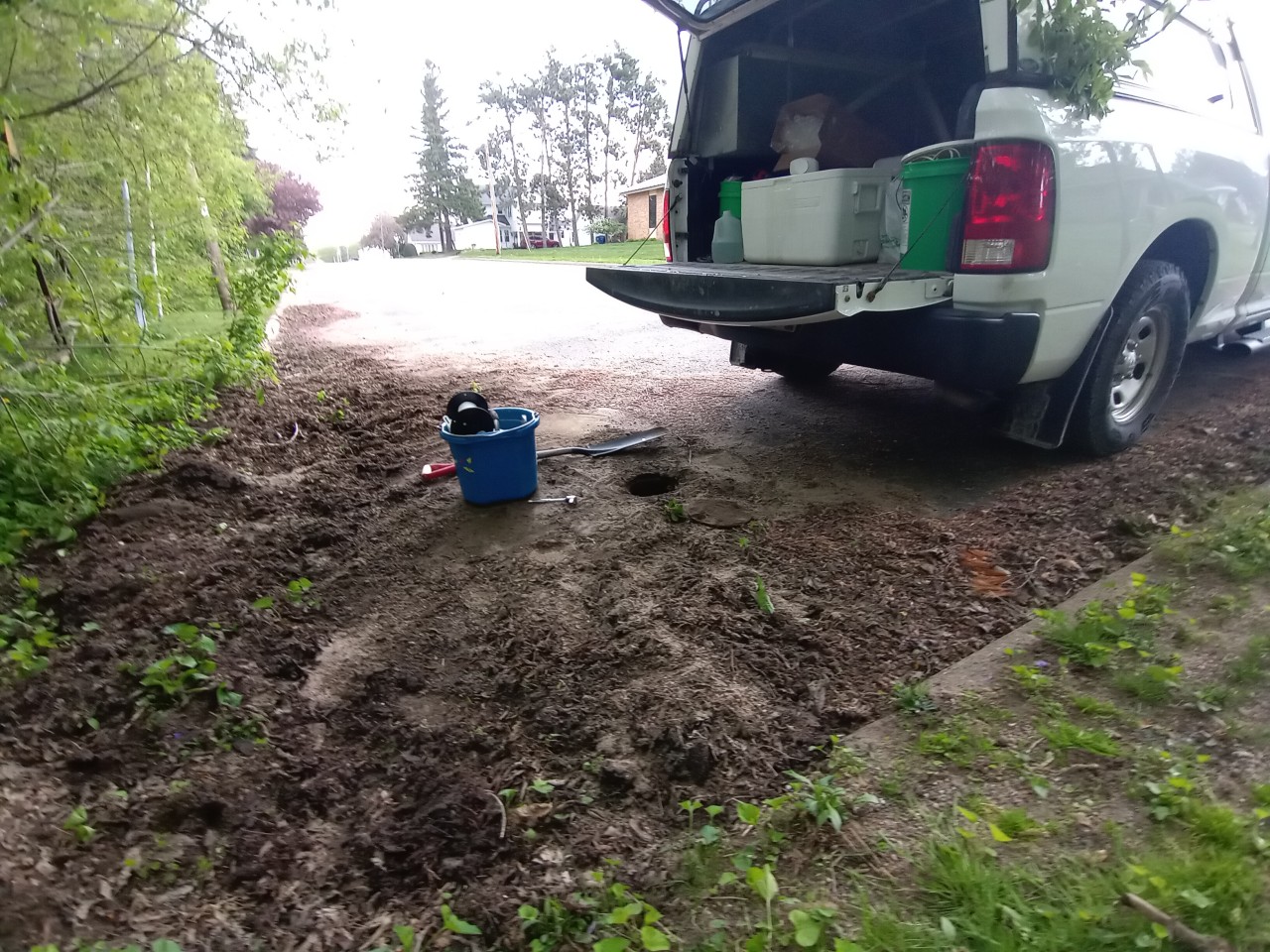Importance of groundwater monitoring and remediation
Groundwater monitoring refers to monitoring water underground in saturated zones of soil and rock. Within these saturated zones, groundwater fills the cracks and spaces in rock and soil. Collectively, these underground layers of water-bearing permeable rock and rock fractures hold 97% of global freshwater resources.
"In the United States, groundwater supplies 35% of drinking water."
*Source: U.S. Geological Survey
Rural areas that do not source water from a municipal water department or a utility company rely predominantly on groundwater. Wisconsin, for instance, contains the highest number of public water systems that rely on groundwater.
As groundwater contamination increases, communities must implement intensive groundwater monitoring and remediation. Some of the key benefits of groundwater monitoring include:
- Determining annual and long-term changes in stored groundwater.
- Determining the direction and gradient of water flow.
- Understanding aquifer systems.
- Gaining insights for well construction and setting submersible well pumps and peristaltic pumps.
In this blog post, we provide an overview of groundwater monitoring, discuss remediation methods to treat contaminated groundwater and explore the benefits of working with an experienced team of water engineers to monitor groundwater in your community.
Groundwater monitoring — an overview
Groundwater monitoring involves collecting, analyzing and storing data annually or quarterly to ensure the groundwater remains suitable for domestic, agricultural, industrial and environmental uses. Data on groundwater monitoring is broadly categorized according to the following categories:
- Baseline data: Baseline data is critical when estimating changes in groundwater quality. Historical climatic data, land-use and water-use inventories, water well records and well and aquifer pumping test results are used to develop a baseline groundwater quality profile.
- Time-variant data: Time-variant data is collected from field stations through direct or indirect water well extraction monitoring, well groundwater level variations, land-use surveys and meteorological observations.
Wells represent a key reference point for groundwater investigation and monitoring. The following table classifies the types of wells used for groundwater monitoring and sampling.
Groundwater monitoring systems
A groundwater monitoring system refers to a series of wells assigned to one or more aquifers for observing groundwater levels and flow conditions. Observation and monitoring wells form the basis of groundwater monitoring systems that can be further classified as follows:
- Reference monitoring system: Reference monitoring systems evaluate general groundwater behaviors, such as flow, recharge and diffuse contamination resulting from climatic variation and land use changes.
- Pollution containment monitoring system: Tertiary monitoring systems are designed to address early warning signs of groundwater contamination from various sources, including industrial sites, intensive agricultural land use, mining, and solid waste landfills.
Groundwater monitoring and sampling equipment
Monitoring wells and groundwater monitoring systems are used to collect groundwater for sampling, and accurate analyses require sound equipment and techniques. Below, we've xcompiled some of the most commonly used groundwater monitoring and sampling equipment.
- Water level meter: Measuring groundwater levels and sampling groundwater can help determine direction and gradients. Portable water level meters provide reliable and accurate measurements of groundwater levels up to 3,000 feet deep
- YSI water quality sampling and monitoring meter: Handheld digital meters are used to evaluate multiple parameters, including temperature, dissolved oxygen, conductivity, pH, turbidity and salinity.
- Peristaltic pumps: These pumps are suitable for collecting groundwater samples from monitoring wells without plumbing or in-place pumps at depths of 28 feet or less.
- Submersible well pumps: Submersible well pumps are used for monitoring wells when high-flow rate purging and low-flow sampling are required for an extended period.
- Bailers: These portable grab samplers are relatively inexpensive devices for collecting groundwater samples from monitoring wells. Bailers are sometimes used to purge groundwater wells and remove stagnant water from the well casing.
When groundwater contaminants exceed permissible limits, the next step is remediation.
Groundwater remediation techniques
Groundwater remediation techniques are classified into physical, chemical and biological methods. The following table briefly discusses common groundwater strategies implemented by municipalities.
Groundwater monitoring and remediation are often expensive because of equipment installation, sampling costs and analysis. Upfront costs of monitoring and remediation techniques often deter communities and municipalities from implementing groundwater monitoring programs. By teaming with experienced remediation experts , you can more easily determine the most efficient and cost-effective groundwater monitoring and remediation methods for your community.
Partnering with environmental consultants for groundwater monitoring and remediation
At Fehr Graham, we are committed to ensuring communities have access to safe drinking water. Our team of hydrogeologists, water engineers, technicians and licensed operators understand the challenges you face while implementing a groundwater monitoring and remediation program in your community. From developing technically advanced and cost-effective groundwater remediation solutions to helping you secure funding resources to carry out the remediation efforts, we assist you through each step of the process.
To learn more about how Fehr Graham can help you with groundwater monitoring and remediation, contact us or call 920.453.0700.
 |
Kendyl Hoss is a Hydrogeologist dedicated to environmental projects. With a focus on soil and groundwater investigations, remedial activities, due diligence and building material assessments, she uncovers valuable insights that pave the way for informed decisions. With an eye for detail and a passion for environmental stewardship, Kendyl navigates regulatory reporting and is a meticulous record keeper who keeps clients informed and involved. Reach her at |
Collaborative, Insightful, Results-Driven Solutions
Fehr Graham provides innovative engineering and environmental solutions to help improve the lives and communities of our customers.

